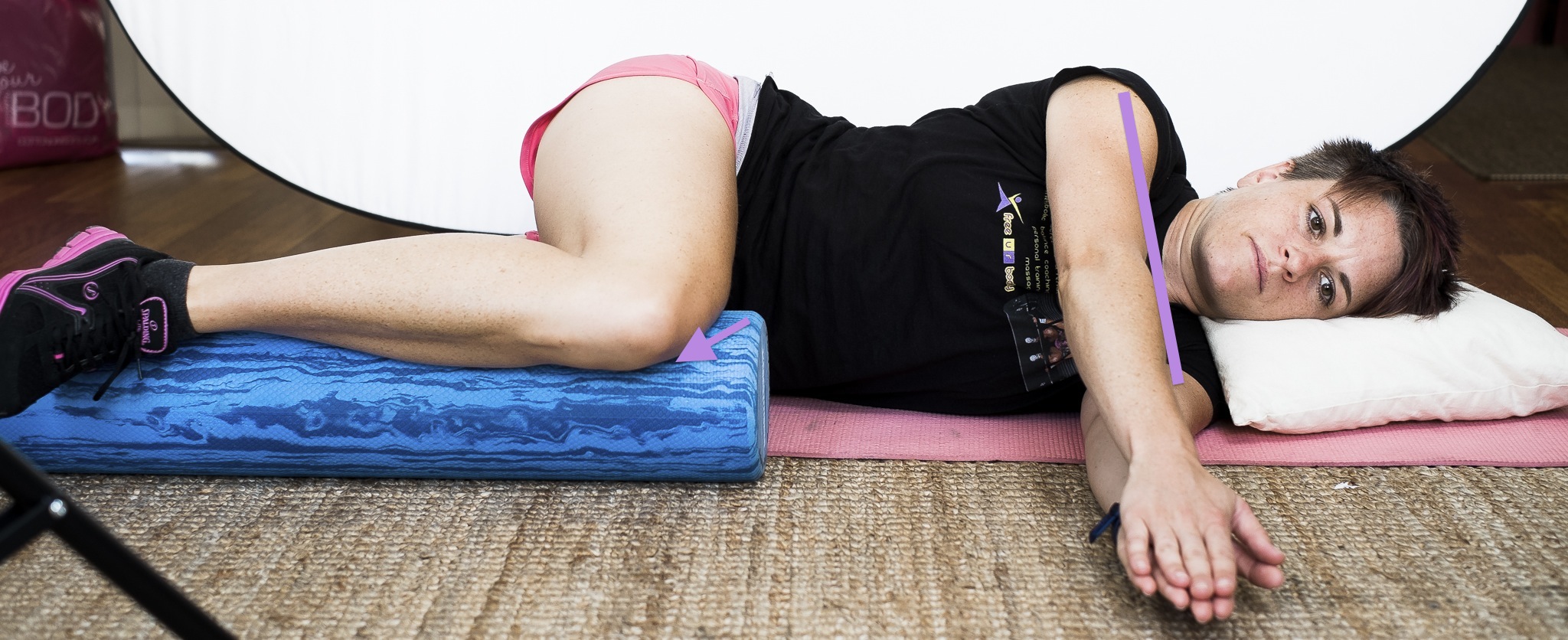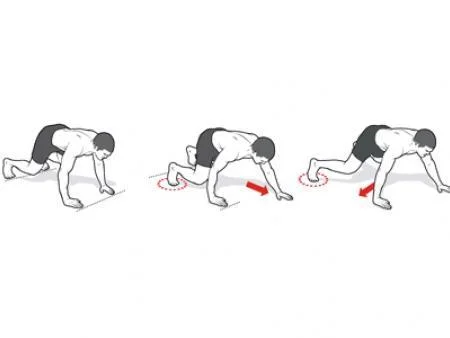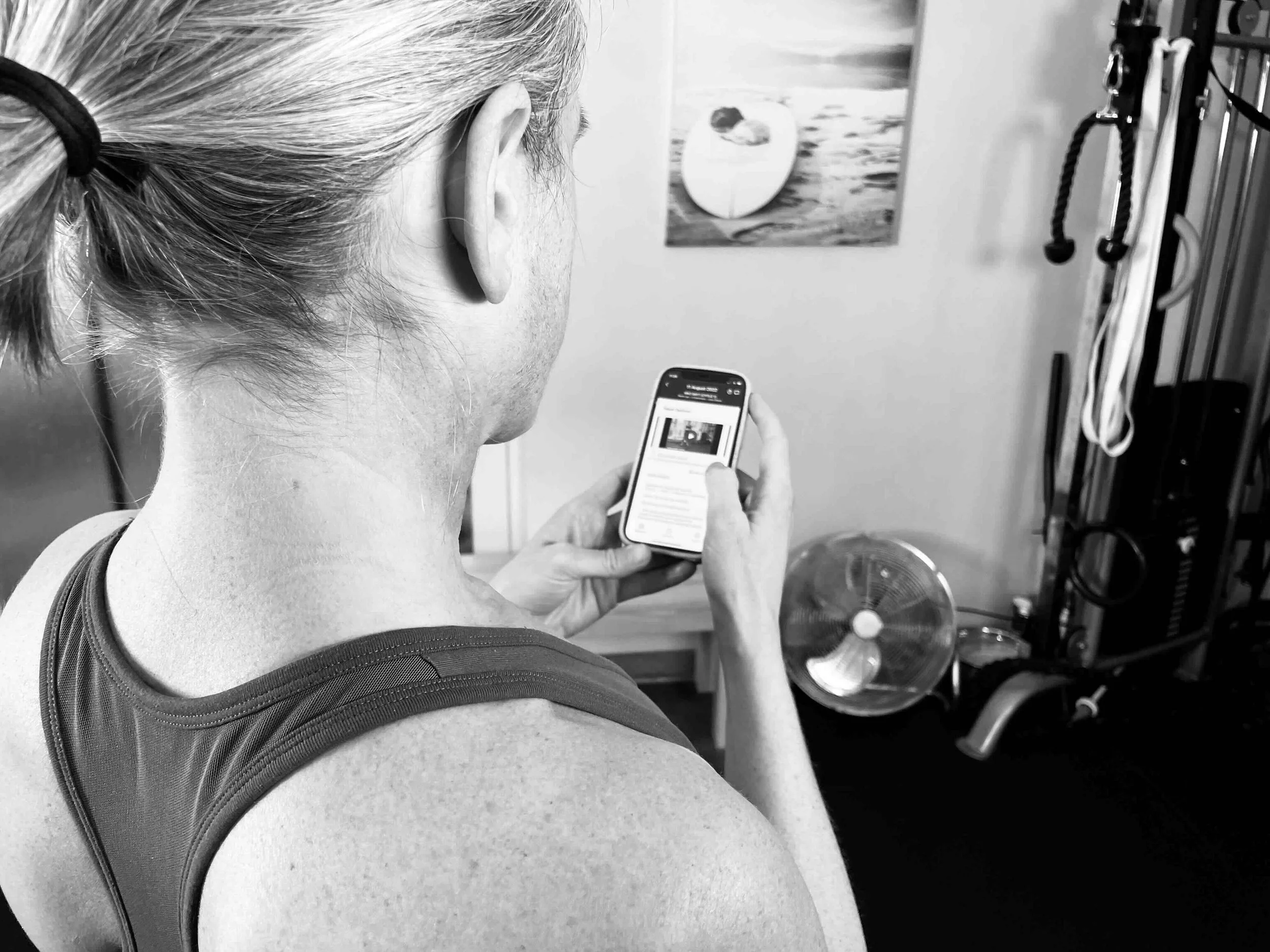In order for your shoulder to function optimally, you need good thoracic (upper back) mobility. Too many people have poor upper thoracic mobility — tightness in the area between your shoulder blades — due to spending many hours at the computer, poor posture, not being active enough, etc. This can lead to problems in shoulder joints, rotator cuff issues and bursitis
We all need good extension through our upper backs in order to complete overhead movements without compromising shoulder joints. In order to improve your upper back mobility, here are a few exercises that can be done at home on a daily basis.
Foam Roller Extension
This will help improve your thoracic mobility into extension. If you're fortunate enough to have a foam roller at home or access to one in the gym, try this...
Sit comfortably with knees bent and bottom on the floor. Place foam roller below shoulder blades, hands behind head.
Keeping your bottom in contact with the floor, slowly breathe out and let your back gently extend over the foam roller. Hold for a count of 3-5 seconds and slowly rise back up to start position.
Repeat this twice and then gently roll the foam roller an inch further up the spine, repeating the extension movement twice. Keep inching the roller up the spine until you've reached the top of your shoulder blades.
Side Lying Thoracic Opener
This will help improve your thoracic mobility into rotation...
Lie on your side with your head supported and bend your knee to 90 degrees before resting it on a foam roller or firm pillow (this protects your lower back). Keep arms outstretched and hands stacked on top of each other.
Start to raise the top hand up and slowly bring it over to the other side of your body, letting your eyes follow that hand all the way, until you can't go further. Make sure your knee stays in contact with the foam roller/pillow and your resting shoulder in contact with the mat, otherwise you've gone too far.
Ensure you can still breathe comfortably and hold for 3-4 breaths, return hand to start position and repeat. Do this 10 times on each side. You'll find that by the last few reps, you'll be able to reach further than the start.
Thoracic Rotation
Only attempt this if you have relatively good shoulder and core strength. This is a good follow on exercise for pain free shoulders that require strength building.
In a standard plank position, make sure your hands are inline with shoulders. Spine (including neck) should be neutral and bum tucked under to engage the glutes, feet just wider than shoulder width apart.
Gently push one hand into the floor, keeping the body aligned and raise the other hand off to rotate around and reach up to the ceiling. Shoulders should be stacked (wrist, shoulder, opposite shoulder and opposite wrist all in one line) and no sagging at the hips.
Your eyes should follow the moving hand at all times. Return to start position and rotate with the opposite arm. Repeat 5-10 times on each side.
Give these a try and let me know how you go!...
















A lot of people own foam rollers but don't know how to use them.
There are a lot of ways to release tension using a foam roller & technique will always come into play.
Best to know the HOW (how to do the movement with good technique) and the WHY (what muscles you are targeting) before letting loose on the foam roller.
We will reveal to you the many different uses for the foam roller as well as the HOW's and WHY's.